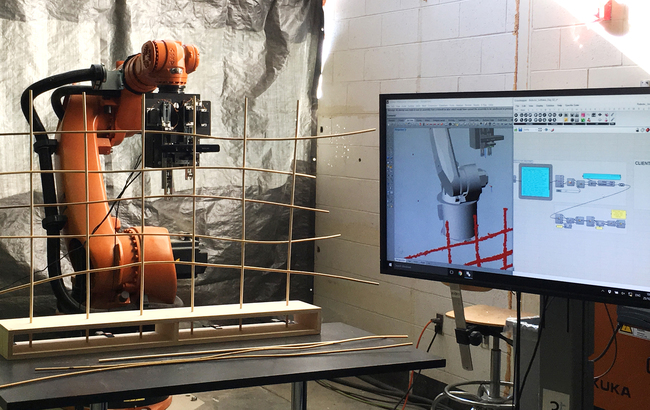ACADIA's 'Robotic Softness' Workshop

(via Archinect)
The Association for Computer Aided Design in Architecture (ACADIA) conference 2016, hosted by the Taubman College of Architecture and Urban planning at the University of Michigan, is a preeminent platform to discuss design philosophies and acknowledge new realms of work done by individuals or organizations among the architectural community. The Institute for Computational Design at the University of Stuttgart’s contribution to the field of computational design and architecture has been immense, and the workshop gave us valuable insight into the technology and know-how being developed at the there.
Through the seven ACADIA’s workshops, we participated in “Robotic Softness: Behavioral Fabrication Process of Woven Structures,” led by Lauren Vasey, a Research Associate from the ICD and Giulio Brugnaro, a graduate of the ITECH Master’s Program at the University of Stuttgart who is currently also pursuing his PHD at The Bartlett School of Architecture. The three day workshop was structured around the goal of introducing us to the concept of “Robotic Softness”, envisioned as a flexible and evolving framework for robotic fabrication in which the design linked with the fabrication process enables continuous feedback loops. Vasey and Brugnaro defined four main directions of investigation for the workshop as: material behavior and fabrication-informed design; scanning and machine vision; online robotic control; and behavioral fabrication strategies.
